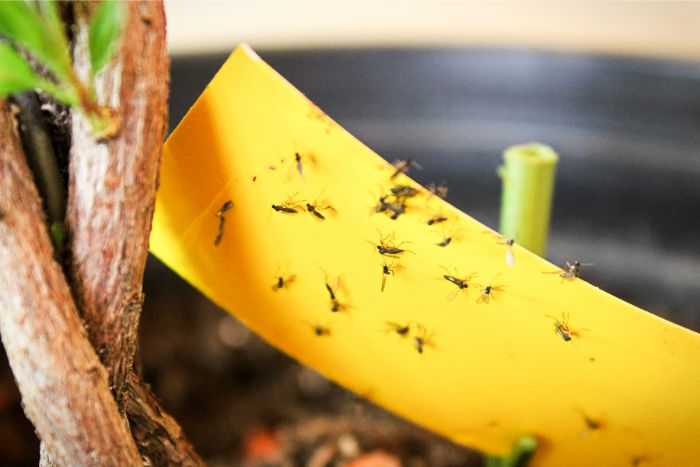Fungus gnats are the tiny black flies that you see buzzing around your indoor plants. There’s nothing fun about them at all, and getting rid of fungus gnats in houseplants can be a bit of a challenge. Thankfully, I’ve got some great tips to help you banish these annoying little bugs for good.
How to get rid of fungus gnats in houseplants: 6 Ways to control fungus gnats in houseplants:
- Use a hydrogen peroxide & water solution
- Allow the potting soil to dry out
- Repot the plant or refresh the growing medium
- Use yellow sticky cards to attract and trap fungus gnats
- Apply insecticides to the potting soil
- Use a biological control agent
While adult fungus gnats are fairly harmless, the larvae can cause damage. Larvae feed on algae and fungi most of the time, but they can feed on plant roots within the soil too, which can lead to root damage and stunted growth. It’s best to get rid of fungus gnats as soon as you notice them. Read on to learn how to effectively get rid of fungus gnats in indoor plants, and how to prevent future infestation.
What Is A Fungus Gnat And How Do They Get In Houseplants?
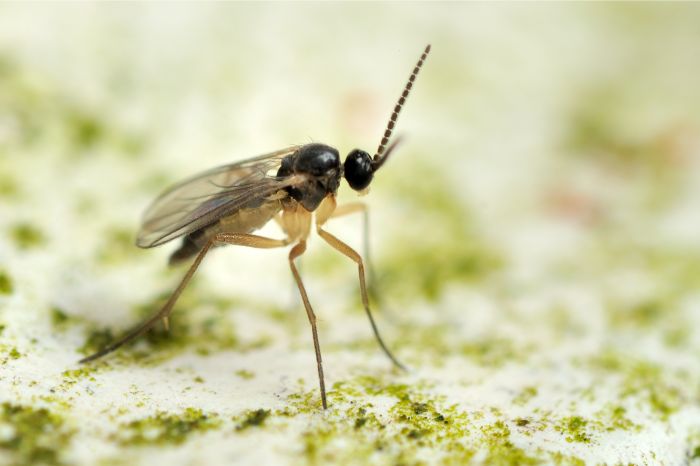
Fungus gnats are not very big at all. In fact, they only grow to around a quarter of an inch in length. You might think that they are too small to cause much damage at all, but unfortunately their larvae can and will damage your plants.
Fungus Gnats are part of a family of insects that include Bolitophilidae, Diadocidiidae, Keroplatidae, Ditomyiidae, and Diptera. Fungus gnats thrive in moist environments and typically seek them out. Naturally, they are found in damp forest areas and typically feed on mushrooms and decaying plant matter.
Fungus gnats do not hibernate in winter like other insects do, which means that they can be a problem all year round.
As gnat larvae like decaying plant material and algae, they seek out damp environments. Fungus gnats are attracted to the following:
- Houseplants that are overwatered (waterlogged soil)
- Bright light (they can be found at windows)
- Mold and mildew
- Wet or warm environments
If this sounds familiar, it is time to get to work making your home and garden a less gnat-friendly environment.
An organic way to test for fungus gnat larvae is by using a slice of raw potato. Push slices or wedges of potato onto the surface of the soil and leave them there for a few days. The larvae will start feeding on the potato on the underside of the slice/wedge. Turn the wedges or slices over and see how many larvae have made their way to it. You can use several slices to draw gnats out of your soil.
How To Identify Fungus Gnats
How do you know if your plant really has fungus gnats? After all, they look very similar to small mosquitos or black flies.
It isn’t too difficult to tell if your house plants have fungus gnats. The first and most reliable way to tell is by inspecting the soil thoroughly. If you happen to notice that there are some black flies or insects hovering around your plants, that is a good sign that you have a fungus gnat infestation.
Of course, not all insects and bugs are fungus gnats, so you might need to verify that they are in fact fungus gnats by looking for other tell-tale signs.
Some other ways to identify fungus gnats include the following:
- Look for Fungus Gnat Larvae. Take a look around on the ground that surrounds your house plant. Do you see any white larvae lying on the ground’s surface? Fungus gnat larvae look like little white specks on the soil. These are baby fungus gnats that have hatched.
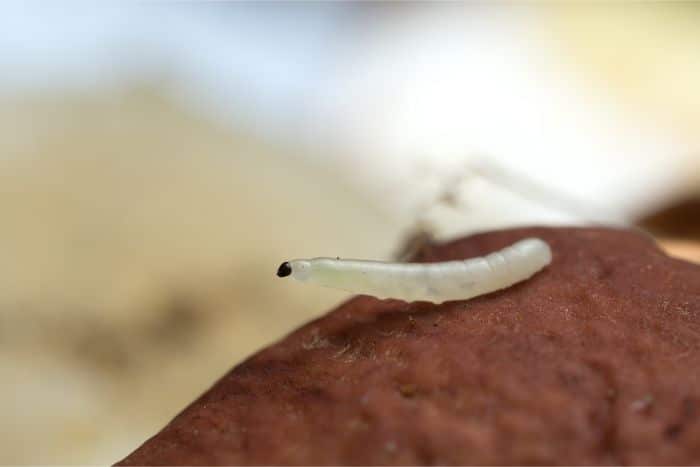
- Take a good look at the condition of your plants. When a plant is being damaged by fungus gnats, there are a few tell-tale signs to look out for. Check if the plant is wilting or withering. A withering or wilting plant could be a sign that fungus gnats have started damaging the root system as they eat their fill in the plant’s potting soil.
- Check for yellowing leaves or leaves falling off the plant. It is normal for plants to shed their more mature leaves when making way for new foliage. It is not normal if the plant is losing more leaves than expected or is losing both young and old leaves.
When fungus gnats eat the roots of house plants, they typically damage the plant’s feeding system. With damaged roots, the plant cannot get nutrients and water up to the leaves and the rest of the plant. When this happens, the leaves start to turn yellow and fall off.
If your plant has yellowing leaves, check the soil for fungus gnats and inspect the roots for damage. You might be able to save the root system if there are still some healthy root sections left.
- If you have seedlings, check on their growth rate. Are your seedlings or young soft plants growing at a suitable speed and making the expected progress? If they do not seem to be making the type of growth progress that you expected, you might be dealing with fungus gnats. Fungus gnat larvae can stunt the growth of young plants.
6 Ways To Get Rid Of Fungus Gnats
If you have a fungus gnat infestation, there is a number of things you can do to rectify the situation. Below are a few ways of getting rid of fungus gnats, as listed above.
1. Use A Hydrogen Peroxide And Water Solution To Get Rid Of Fungus Gnats
3% Hydrogen Peroxide is an effective substance for controlling larvae. To get rid of fungus gnats, mix a solution of 1 part of hydrogen peroxide with 4 parts of water.
You should only water your house plant with this solution when the top of the potting medium is dry. When you pour the peroxide solution into the soil, you might hear an effervescent sound.
Once the peroxide has done its job of killing the gnat larvae, it will break down in the soil. It is completely harmless to your plant. While it should work first time around, you might need to repeat the process.
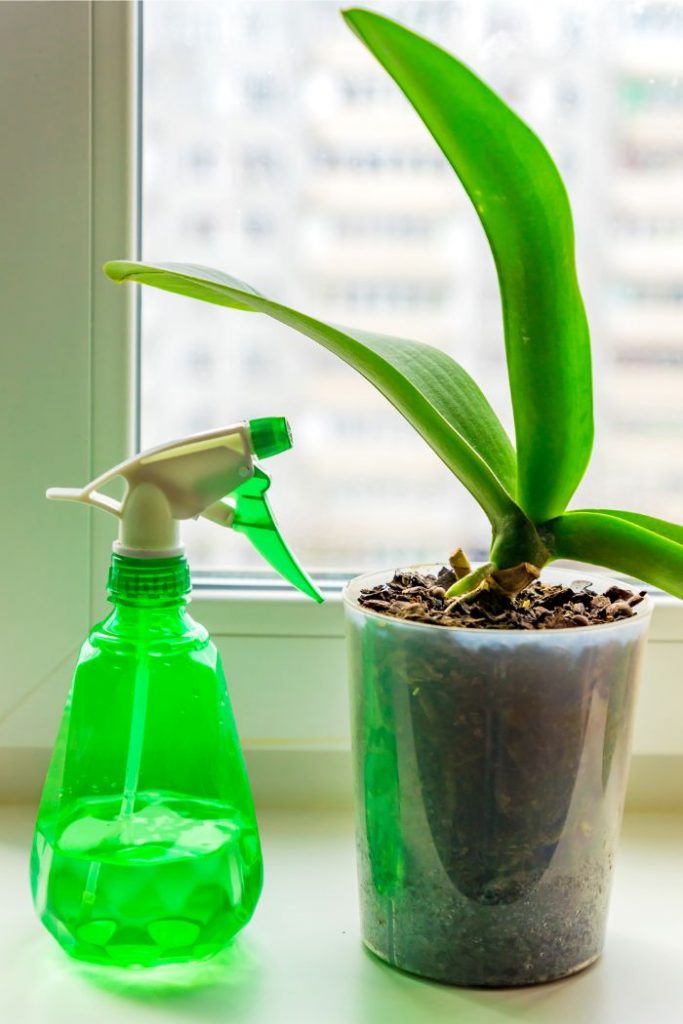
2. Allow The Potting Soil To Dry Out To Get Rid Of Fungus Gnats
As fungus gnats are attracted to damp environments, it is important to ensure that your house plants potting medium is not always wet or damp. It is tempting to water house plants frequently, but you might not be doing your plants any favors if your watering frequency is attracting insects.
If your plants are constantly watered, the environment becomes prime real estate for mold and algae to grow. And by now you already know that mold and algae are two things fungus gnats love. By allowing the top 2 inches of soil to get completely dry between watering, you can create a soil environment that is not fungus gnat friendly.
Before you water your house plants, feel the surface layer of the plant. If it is wet or damp, do not water. If it is dry, you can water. Female fungus gnats specifically seek out soil that is consistently wet. Drying soil deters eggs from hatching into larvae.
Giving your indoor plants the right amount of water is the most important thing you can do to keep your houseplants healthy. It seems like such a simple thing to do, but it’s a skill that you need to develop. I’ve written several articles to help you get this right. Read about ways to tell when to water your houseplants and how often to water your houseplants for more information
3. Repot The Plant To Deter Fungus Gnats
If you have larvae infested soil and do not want to kill the gnats, you can always repot the plant in fresh soil with good nutritive value. Remove the house plant from its container and discard the infested soil. Make sure that you rinse off the roots or shake excess soil from the plant.
All plants have their own sensitivities, so it is important to look up how to best repot the plant you are working with. Once you have cleaned out the container, you can repot the plant.
Make sure that there is no decaying plant matter in containers or near your newly potted plant as fungus gnats can easily spread. Also, be careful to only water the plant as required and not to keep the soil soaked as this will just keep attracting fungus gnats.
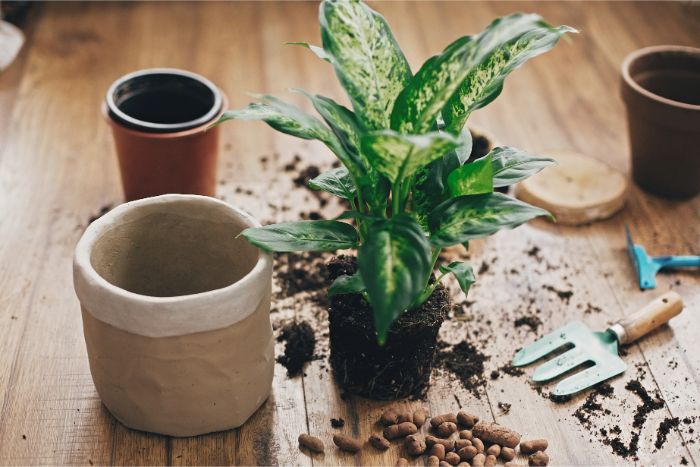
4. Use Yellow Sticky Cards To Remove Fungus Gnats
You can use sticky yellow fly trap cards to catch fungus gnats in your houseplants. This is a reliable method to use if you are dealing with an abundant population of gnats. Adult fungus gnats are naturally attracted to the color yellow, which is why fly trap cards are often yellow.
You should be able to find a sticky yellow card product called Gnat Stix online and in local nurseries and stores. To use this method, simply place the sticky cards beneath the canopy of the plant’s pot.
As the gnats make their way towards the yellow card, they will get trapped in the sticky area. This helps to reduce next-generation larvae populations.
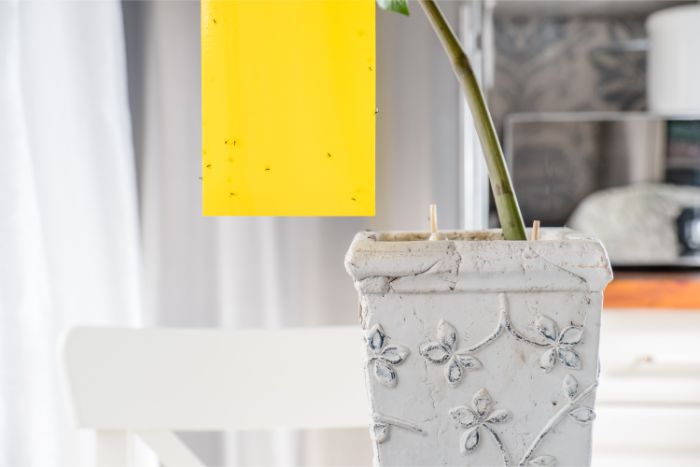
5. Apply Insecticides To Get Rid Of Fungus Gnats In House Plants
Many house plant owners want to sort the problem of fungus gnats out as quickly as possible, with insecticide. Different insecticides will be required for the adults and the larvae as they respond differently to treatments. New adults are usually born on the surface of the potting soil, so it is best to apply the insecticide to the soil’s surface.
There is no need to spray the insecticide onto the actual plant as the gnats typically infest the soil and head for the roots and the algae in the soil.
You can choose to use a mild or natural option such as Neem Oil or dish soap, but they are not as effective on fungus gnats as some other commercial options.
If you are looking for highly-effective and reliable insecticides for getting rid of gnats not just immediately, but long term, look for products that contain permethrin, bifenthrin, cyfluthrin, and lambdacyhalothrin.
6. Use A Biological Control Agent To Get Rid Of Fungus Gnats In House Plant Soil
Using insect-parasitic nematodes is a great way to control fungus gnats biologically. An insect-parasitic nematode is a type of roundworm that is invisible to the naked eye. Steinernema Feltiae is a highly effectively parasitic nematode to use when treating house plant soil for fungus gnats.
When used to get rid of gnat larvae, they are poured onto the soil in a solution. The roundworms then set to work destroying the fungus gnats in a fairly disturbing way.
The microscopic worms enter the gnats via the mouth, breathing pores and other orifices and release bacteria that actually digest the gnat from the inside out. It can take up to 4 days for this method to be effective in getting rid of fungus gnat larvae. For all intents and purposes, the fungus gnats are attacked and devoured by these microscopic round worms.
How To Stop Fungus Gnats Spreading To Other House Plants
Fungus gnats like to spread from plant to plant. This means that if you have one infested house plant, you run the risk of infecting all the other house plants in your home too.
The best way to protect your house plants from the spread of fungus gnats is to separate the healthy plants from the infested plants. Quarantining the fungus gnat infested house plants is a good first step.
Start treating your infested plants immediately and consider carrying out the same treatments on your other plants. This can serve as a preventative step, just in case larvae or eggs have found their way into their containers.
How To Prevent Fungus Gnats
Fungus gnats are not a problem you have to deal with only after they have made an appearance. There are things that you can do to prevent them from infesting your house plant’s soil in the first place. Below are a few pointers to help you prevent fungus gnats and keep them at bay.
Keep Plant Debris To A Minimum
Plant debris is a dream come true for fungus gnats. Plant debris is a main source of decaying plant material and this is where adult female fungus gnats love to lay their eggs.
If you notice debris that has fallen from your plants lying in or around the pot, clear it away. These include leaves, flowers, fruit, sticks, and similar. Potting soil that contains compost such as bark should also be avoided as these can trap moisture and include decaying organic matter which is very attractive to the fungus gnat.
Be Careful To Avoid Overwatering
Good drainage is your friend when it comes to keeping fungus gnats at bay. If your plant containers are consistently damp, fungus gnats will find their way to it and make themselves at home.
Do not overwater your plant and if you find that the soil itself does not drain well, add some perlite to the mix to help with absorption and drying out.
When you do water your plants, make sure that no water is left in the saucer beneath the pot. Empty these out no more than 30 minutes after the plant has been watered.
Plan your watering schedule carefully. Follow the care instructions for your plants and avoid watering until the soil is suitably dry. You can push your finger into the soil to feel if it is dry enough before watering. It is quite important to keep the top layer of your potting soil dry as this will deter fungus gnats from laying their eggs.
Last Word
Getting rid of fungus gnats can be tricky, but with these tips, you should be well on the way to getting rid of them. A lot of the process of keeping fungus gnats at bay is your watering schedule. Adjust that and you shouldn’t be pestered by these bugs at all. Make sure that you are creating a living environment that is ideal for your house plant and not the pests that seek to destroy it.

